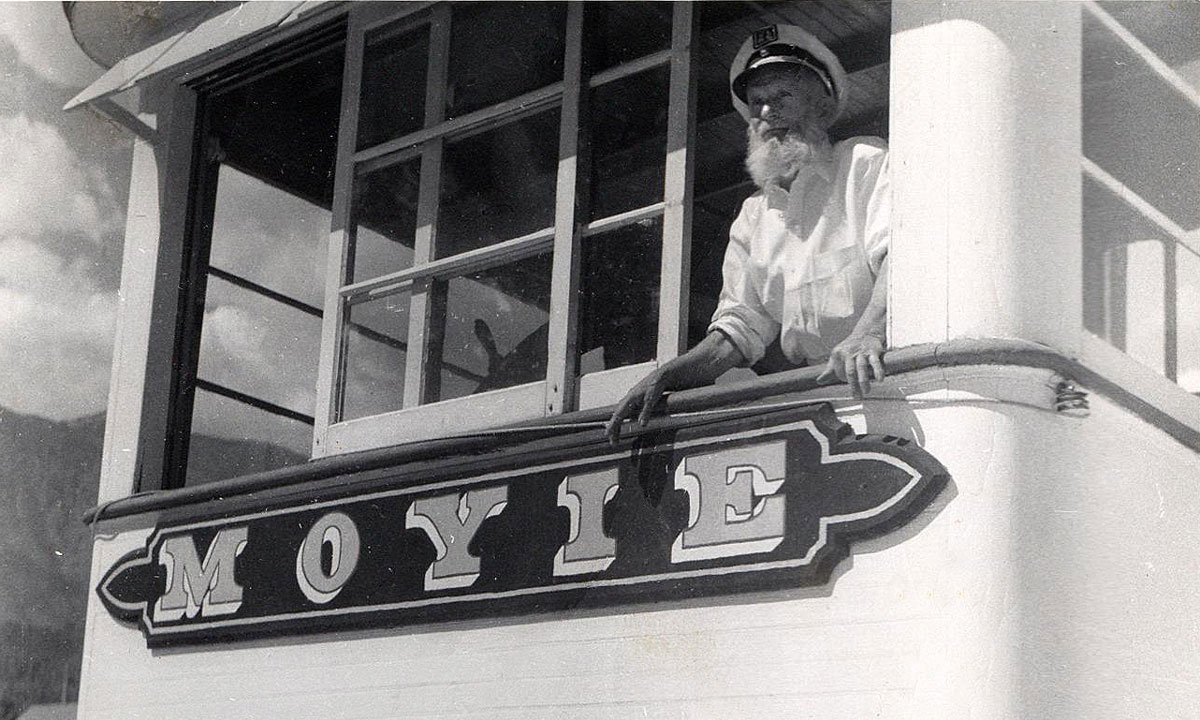Key People who saved the ship
Notable People in saving the ship
Over the years there have been numerous individuals who have had a great effect on the Moyie’s fate. Members of the Kootenay Lake Historical Society’s board of directors, volunteer workers, Parks Canada and National Historic Site staff, and restoration crews have all contributed to the preservation of this amazing piece of history. To name all of these people would take page upon page of names and we owe a debt to them all. However, we would like to bring attention to four of these people—Jack Morris, Noel Bacchus, Alex Barbour and Ken Butler.
Jack Morris and Noel Bacchus
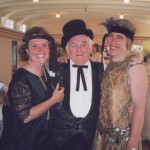
In 1954, with the CPR facing increasingly high maintenance costs, declining Kootenay Lake traffic, and improved road conditions, rumors circulated that the Moyie was nearing retirement. Jack Morris, at that time an alderman in Kaslo and President of the Board of Trade, and his friend Noel Bacchus, wrote a letter to the CPR, stating that Kaslo would like to purchase the Moyie and turn it into a museum.
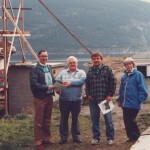
Kaslo and Nelson learned that the Moyie would be retired in April 1957. The Nelson Junior Chamber of Commerce started a campaign to purchase the Moyie. Their plan was to turn it into a dancehall and restaurant. The CPR had stated publicly the Moyie would go to the group with the money and ability to preserve the ship. Jack decided to send out a SOS for funding one evening when he heard that the BC Legislature was having a late night sitting. Jack got his old friend Noel out of bed and they telephoned Randolph Harding, MLA for Kaslo-Slocan. Jack asked for $10,000 for the Moyie project and Harding, a Co-operative Commonwealth Federation (CCF) member of the Legislature, relayed the request across the House to Social Credit Premier WAC Bennett during the sitting. A few days later Bennett telephoned Jack and suggested a $7,500 government grant, provided that Kaslo could raise $2,500. Through various fundraisers, under the leadership of Jack and with the determination of the small town of Kaslo, they were able to raise the needed capital. On March 26, 1957, Randolph Harding wired Jack with a simple message “grant of $7,500 approved yesterday”.
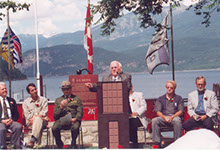
This was just the beginning. The Moyie was sold to the City of Kaslo for $1 and in June 12, 1958, the Kootenay Lake Historical Society (KLHS) was formed with Noel Bacchus as President for its first three years. After the ship was towed to Kaslo and brought on to shore, Noel became its curator and lived on it for three years. He promoted Kaslo, the ship and helped to set up displays on the history of the ship and the community. Jack navigated the Moyie through stabilization, restoration, and other projects far too numerous to mention. He and a group of dedicated individuals have steered the Moyie to the condition she enjoys today.
Jack remained active and involved in the operation and planning of the S.S. Moyie National Historic Site right up until his passing on Feb. 8, 2005. Jack’s energy and enthusiasm left a profound impression on all who knew him.
Stabilization and Preservation
By the time the Moyie had been ashore for 20 years its physical condition was poor, despite efforts by the Kootenay Lake Historical Society to maintain the ship. For example, Harry Griswold, a born inventor and tinkerer, had begun installing support posts inside the ship before the winter snows. Each year new leaks appeared. The British Columbia member of the Historic Sites and Monuments Board brought this situation to the attention of Parks Canada, whose experts made strong recommendations for immediate and long-range conservation measures, with an estimated cost of over $700.000. An offer of half this amount from Parks Canada was matched locally as the result of an energetic “Save our Ship” campaign and help from the province of British Columbia. Work began in 1988.
Alex Barbour
Parks Canada’s marine expert, Alex Barbour, had serious doubts about the wooden cradle that had supported the Moyie since 1958. He made an immediate suggestion – remove the caulking from between the hull planking. This step would allow the water which had entered the ship through leaks in its upper decks to drain out. His second recommendation was to replace the cradle with one made of steel, and which would support the cross frames inside the hull. A big job, but Alex was a man of the Clyde, Scotland’s shipbuilding heartland. He met Dick Smith, a near neighbor and a fellow Scot who had come to Kaslo to build ships. Dick built the new cradle, the first big step in what was to become a multi-year project.
Ken Butler
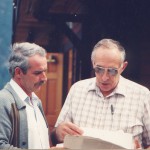
Ken Butler was hired Nov. 15, 1988 as Project Manager for the Moyie. Ken Butler turned out to be the perfect candidate for the position of project manager. With years of experience in construction and engineering, he approached the task at hand with gusto and leadership. The impact of Ken Butler is seen everywhere on the Moyie site. To list all the restoration activities undertaken during his tenure would fill numerous pages, so we will revisit only some of them.
In July 1989 the Moyie was declared a British Columbia Historical Landmark and additional provincial funds were provided for the ship. This allowed a new Visitor’s Reception Centre, based on a the style of a CPR station, to be constructed, washroom facilities for local beach users, and a wheelchair accessible wharf and walkway. Work was next done on such interpretative elements as the interior of the ladies’ saloon, the foredeck, the transom, boat deck handrail, the galley, the staterooms, the men’s saloon bar and many other projects. To provide information for visitors, an after-hours information kiosk was constructed and interpretative street signage put in place.
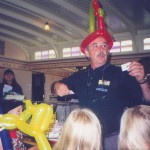
The first phase under Ken was Stabilization. A steel support cradle was built and installed to prop up the Moyie and protect her hull against rot and a fire sprinkler system was put in place. Under the Preservation phase new canvas decks were laid down, repairs were made to the hull elements and boiler supports, and two lifeboats were refurbished.
Ken was a leading light in the time of the Moyie’s return to the elegance of her glory days as the “Sweetheart of the Lake”. He, like many others before and since, truly “bonded with the boat”. His love of the Moyie ensures that she will be enjoyed by generations to come.
